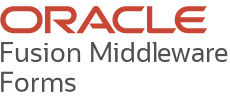
There has been lots of discussion around what features "might" find their way into the next Forms release. Wouldn't it be cool if one of your suggestions became one of those "new" features? Well, it's time to be heard. We posted threads like this several times during other release cycles and have found them to be very helpful. As a result I will continue to start threads like this from time to time.
Although many other improvements are planned for the coming release, UI will be a main focus. So what ideas do you have? Here is a template you can use to share your idea. Feel free to copy it.
SUGGESTION DETAILS
WHAT VALUE WOULD THIS ADD TO APPLICATIONS OR THE PRODUCT
EXAMPLE MOCKUP (IF POSSIBLE)
Here is an example of what you might share:
SUGGESTION DETAILS
Provide a way to hide selected sides of the border of text fields. Currently a text field is shown with a border around all four sides of the rectangle or completely hidden (no sides shown).
WHAT VALUE WOULD THIS ADD TO APPLICATIONS OR THE PRODUCT
By providing selectable border sides, applications could be designed to more easily resemble their HTML counterparts. This would be one step more toward helping to modernize the Forms runtime UI.
EXAMPLE MOCKUP (IF POSSIBLE)
|  |
|
|

|
|

|
|

|